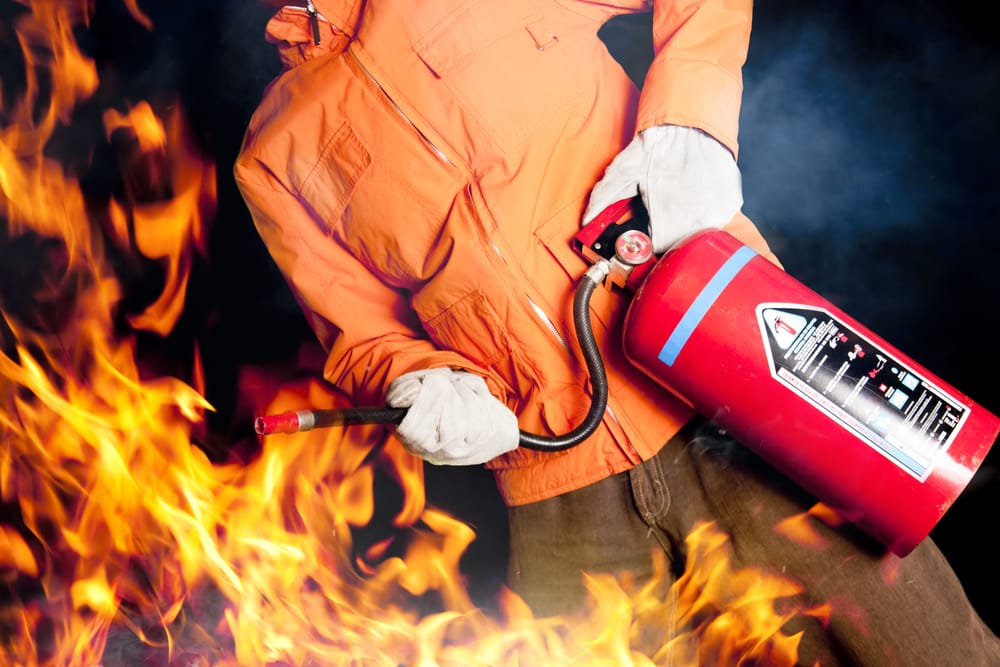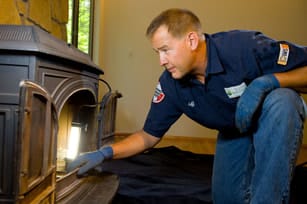Reports claim over 25,000 chimney fires in America are responsible for the loss of property worth over $120 million every year. There are thousands of deaths and injuries resulting from chimney fires annually. These are alarming figures. Creosote buildup is the biggest cause of chimney fires but deteriorated chimney liners and other structural issues can allow embers to escape to parts within and outside the chimney that can be ignited.
Only a few homeowners can boast of being prepared during such a scary scenario. First things first, you cannot handle what you cannot recognize, how then can you tell if the chimney is on fire?
Types of Chimney Fires
There are two kinds of chimney fires and it is not difficult to tell one from the other. Both, however, also have the ability to cause great harm. The first kind is a quiet burning type of chimney fire. It burns slowly but this does not in any way imply it is less dangerous. It is even more dangerous considering one can hardly tell it is taking place. This kind of chimney fire will not only destroy the chimney structures but can also lead to combustible parts of your home going up in flames.
The other type of chimney fire is loud and volatile. You can imagine it being similar to a coal engine train sputtering in your chimney. The roar of the fire is conspicuous and unmistakable. The flames often are accompanied by dramatic billows of smoke that can be seen from outside. Your neighbors and other passersby are sure to notice it.
How to prevent chimney fires
- Only burn dry, hardwood. Soft or wet wood burns slowly and build creosote rapidly. Do not use gasoline to light your fire at the fireplace. Instead, use dry kindling or newspaper.

Chimney/fire inspection
- Do not burn flammables like gift wrappers, cardboard, or even dispose of the Christmas tree in your fireplace. Burn large logs, rather than many smaller logs when possible.
- Ensure you get your chimney inspected and cleaned regularly
How to Handle a Burning Chimney?
Evacuate your family
As soon as you notice the chimney is on fire, evacuate your family and pets first. Lives come first. Then call the fire department. As much as the fire might seem controllable and one you can handle with your extinguisher, still, be advised to call the firefighters for extra precaution purposes in case something gets out of hand. You can attempt to cut off the supply of air leading to the chimney as oxygen in the air encourages burning. This move may stop smaller fires entirely or lessen bigger fires giving you time to combat them effectively.
This can also stop sparks from lighting after the flames have been put off. Cut off air supply by closing the damper, the fireplace glass doors, and leave the house. In case you use your extinguisher, wear protective gear like a dust mask to protect you from the smoke. Also, use heat-proof gloves so that your hands don’t get scalded or burned. Direct the nozzle towards the grate. Spray in short bursts and do not stand too close because the pressure from the nozzle can throw sparkles into the air and might land on you.
Always have a Fire Suppressant
This might range from a bucket of sand that you can conveniently keep by your fireplace or commercial suppressants bought from the market. Sand or baking soda was thrown into the fire suppresses oxygen circulation in the fire that can increase combustion. One such suppressant that can be readily bought in stores is Chimfex. All you have to do is light it and toss it into the fire and it will starve the fire of oxygen. These products are affordable and have a considerably durable shelf-life.
One thing with chimney fires is that even if put out, they are likely to occur again unless the source is dealt with. This means you must call a chimney professional for proper inspection, repairs, and maintenance tips. At SootMaster, we can help you get the best comfort and value from your fireplace.


